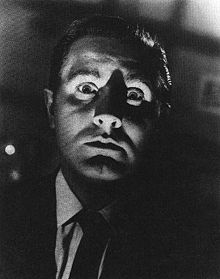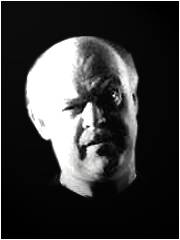(CulTrashVintagEroticScifiHorrorGorExploitationComicScenePopCulture from the Center to the Extreme & Around the World!!!)
quinta-feira, 29 de setembro de 2011
segunda-feira, 26 de setembro de 2011
Duarte & C.ª - Temporada 1
Duarte & C.ª foi uma série portuguesa de comédia, produzida pela RTP, cuja acção se centrava nas aventuras de uma dupla de detectives que tinham como veículo um Citroën 2CV. Recentemente a série tem sido retransmitida pela RTP Memória.
Em 2005, a RTP editou em DVD os seis episódios correspondentes à primeira temporada. Em Junho de 2006 foi a vez da segunda e terceira temporadas, acrescentando 15 episódios aos editados anteriormente. Esperam-se novos lançamentos para o Natal de 2006.
Durante o início dos anos 90 esta série foi transmitida na rubrica "Sem Legendas", nas tardes semanais da RTP1.
Temporada 1 (1985)
- Episódio: #1.1 O Roubo dos Planos da Pólvora
- Episódio: #1.2 A Vingança de Lúcifer
- Episódio: #1.3 O Artista do Crime
- Episódio: #1.4 O Novo invento do Professor Ventura
- Episódio: #1.5 Lisboa não é Hollywood (1ª Parte)
- Episódio: #1.6 Lisboa não é Hollywood (2ª Parte)
Informação retirada daqui: http://pt.wikipedia.org/wiki/Duarte_%26_C.a
Genérico de "Duarte & Companhia" - 1ª Série
Duarte & Companhia - 1º Episódio - 1ª Série
Agatha Christie (II)
Mais Info sobre Coleção e Autora:
http://www.estantedelivros.com/category/rba-coleccionables
http://pt.wikipedia.org/wiki/Agatha_Christie
domingo, 11 de setembro de 2011
Soldados da Fortuna (The A-Team)
Info on this Legendary TV-Series:
The show remains prominent in popular culture for its cartoonish, over-the-top violence (in which people were seldom seriously hurt), formulaic episodes, its characters' ability to form weaponry and vehicles out of old parts, and its distinctive theme tune. The show boosted the career of Mr. T, who portrayed the character of B. A. Baracus, around whom the show was initially conceived.[1][2] Some of the show's catchphrases, such as "I love it when a plan comes together,"[3] "Hannibal's on the jazz," and "I ain't gettin' on no plane!" have also made their way onto T-shirts and other merchandise.
The show's name comes from the "A-Teams," the nickname coined for U.S. Special Forces' Operational Detachments Alpha (ODA) during the Vietnam War.[4]
A feature film based on the series was released by 20th Century Fox on June 11, 2010. A comic book series, A-Team: Shotgun Wedding, began March 9, 2010.
Copy-Paste from: http://en.wikipedia.org/wiki/The_A-Team
More Info: http://www.planetadeagostini.pt/colecionavel/soldados-da-fortuna---esquadrao-classe-a---edicao-2010.html
SERIES INTRO & THEME SONG
Bonanza
Info on this Legendary TV-Series:
Bonanza is an American western television series that ran on NBC from September 12, 1959 to January 16, 1973. Lasting 14 seasons and 430 episodes, it ranks as the second longest running western series (behind Gunsmoke) and still continues to air in syndication. It centers on the Cartwright family, which lived in the area around Lake Tahoe, Nevada. The show stars Lorne Greene, Pernell Roberts, Dan Blocker, Michael Landon and David Canary .
In 2002, Bonanza was ranked #43 on TV Guide's 50 Greatest TV Shows of All Time.[1]
Premise
The show chronicled the weekly adventures of the Cartwright family, headed by the thrice-widowed patriarch Ben Cartwright (Lorne Greene). He had three sons, each by a different wife: the eldest was the urbane architect Adam Cartwright (Pernell Roberts) who built the ranch house; the second was the warm and lovable giant Eric, "Hoss" (Dan Blocker); and the youngest was the hotheaded and impetuous Joseph or "Little Joe" (Michael Landon). The family's cook was the Chinese immigrant Hop Sing (Victor Sen Yung). Bonanza was considered an atypical western for its time, as the core of the storylines dealt less about the range but more with Ben and his three dissimilar sons, how they cared for one another, their neighbors, and just causes.
"You always saw stories about family on comedies or on an anthology, but Bonanza was the first series that was week-to-week about a family and the troubles it went through. Another thing about Bonanza that is interesting is that it is a period drama, but it attempted to confront contemporary social issues. That was very difficult to do on television. Most shows that tried to do it failed because the sponsors didn't like it, and the networks were nervous about getting letters," explains Stephen Battaglio, a senior editor for TV Guide magazine (Paulette Cohn, "Bonanza: TV Trailblazer", American Profile Magazine, p. 12, June 5, 2009).
The family lived on a thousand-square-mile [2] ranch called Ponderosa on the shore of Lake Tahoe in Nevada. The vast size of the Cartwrights' land was quietly revised to "half a million acres" on Lorne Greene's 1964 song, "Saga of the Ponderosa" ("Bonanza" set liner notes, Bear Family Records, disk 1), which if taken literally is still enormous, being slightly more than 781 square miles (2023 km²). The ranch name refers to the Ponderosa Pine, common in the West. The nearest town to the Ponderosa was Virginia City, where the Cartwrights would go to converse with Sheriff Roy Coffee (played by veteran actor Ray Teal), or his deputy Clem Foster (Bing Russell). Greene, Roberts, Blocker, and Landon were billed equally. The opening credits would alternate the order among the four stars. As the series advanced, writers began to showcase one or two Cartwrights in each episode, while the others would be seen briefly in the prologue and epilogue. Not only did this provide for more thorough character development, it also gave all four actors more free time.
Originally, the Cartwrights tended to be depicted as put-off by outsiders. Lorne Greene, however, objected to this, pointing out that as the area's largest timber and livestock producer, the family should be less clannish. The producers agreed with this observation and changed the Cartwrights to be more amiable.
The show's title "Bonanza" is a term used by miners in regards to a large vein or deposit of ore,[3] and most likely refers to The Comstock Lode.
Copy-Paste from: http://en.wikipedia.org/wiki/Bonanza
TRAILERS OF SERIES THEME SONG
As Aventuras de Pica-Pau
The Woody Woodpecker Show
The Woody Woodpecker Show is a long-running 30-minute American television series mainly composed of animated cartune escapades of the world-famous woodpecker and other Walter Lantz characters including Andy Panda, Chilly Willy, and Inspector Willoughby released by Walter Lantz Productions. The series was revived and reformatted several times, but has remained popular for nearly four decades and allowed the studio to continue making theatrical cartoons until 1972 when it shut down. It also kept the Walter Lantz/Universal "cartunes" made during the Golden Age of American animation a part of the American consciousness. The Woody Woodpecker Show was named the 88th best animated series by IGN.[1]
History
Movie theater owners in the 50’s were finding that they could release features with reissued cartoons, or no cartoons at all, and the audiences would still come. Because of the practice, the theatrical cartoon business was suffering and losing money. By 1956 there were only seven animation producers in the short-subjects business, and by the end of the decade that number would dwindle down to three. Walter Lantz and his distributor, Universal Pictures, knew that the only way to subsidize the rising costs of new shorts was to release their product to television. Norman Gluck from Universal's short-subjects department made a deal with the Leo Burnett Agency to release some older Lantz product on television. Burnett handled the Kellogg's cereal account, and Lantz soon met with the Kellogg's people to sign the contract.[2] Lantz admitted that he was only working in the medium because he was “forced into TV” and “cartoons for theaters would soon be extinct.” [3]
The Woody Woodpecker Show debuted on ABC on the afternoon of October 3, 1957. The series was seen once a week, on Thursday afternoons, replacing the first half hour of the shortened Mickey Mouse Club. Lantz integrated his existing cartoons with new live action footage, giving the show an updated look that satisfied both viewers and Lantz himself. The live action & animation segments created for the show, called ‘A Moment with Walter Lantz’, featured an informative look at how the animation process for his “cartunes” worked as well as how the writers came up with stories and characters. The live-action segments were directed by Jack Hannah, who was fresh from the Disney Studio where he had done similar live-action/animation sequences for the Disney show.[2]
After the initial year on ABC, The Woody Woodpecker Show was syndicated until 1966. The “A Moment with Walter Lantz” segments were eventually replaced with "Woody's Newsreel" and "Around The World with Woody" which used footage of Universal Newsreels and featured voice-over commentary by Walter Lantz and Woody Woodpecker. In 1970, the show reappeared on network television, with 26 additional episodes assembled by Lantz for NBC. The show ran on NBC until September 2, 1972, which is the same year the Walter Lantz Productions studio shut down. The show was revived again on September 11, 1976. 1976 show featured cartoons from 1940 to 1965[4]. The show ended its network run on September 3, 1977. Local stations continued to air The Woody Woodpecker Show for the next several years.
In 1984, Lantz sold everything outright to MCA/Universal. Though Lantz did remain active in overseeing how Universal handled his characters (for merchandise, TV, home video, theme parks, limited edition cels, etc.) up until his death in 1994.[5]
In 1987, MCA/Universal and The Program Exchange returned the show to television with a new 65 episode package for syndication. This Woody Woodpecker Show featured a complete overhaul of the series format. Gone were the newsreels, "Around the World" segments, and live action scenes with Walter Lantz. New commercial bumpers were added and a new opening sequence was created. This one featured Woody and several other popular Lantz characters running amok and finished with Woody pecking the show logo and laughing. Episodes of this Woody Woodpecker Show typically consisted of two Woody cartoons bookending another Lantz cartoon (typically a Chilly Willy cartoon). The series continued airing in syndication until 1997. Around that time, Cartoon Network picked up rerun rights and aired The Woody Woodpecker Show for one year, after which the series disappeared from television.
After Cartoon Network dropped The Woody Woodpecker Show, Universal decided to give most of the Lantz characters a redesign. The redesign led to The New Woody Woodpecker Show, which ran from 1999 to 2002, with Billy West now voicing Woody, as part of the Fox Kids Saturday morning lineup and to date is the last Woody Woodpecker series.
DVD
In the early 2000s, a series of mail-order Woody Woodpecker Show VHS tapes and DVDs were made available by mail order through Columbia House. Each DVD featured “cartunes”, bumpers, and ‘A Moment with Walter Lantz’ or Newsreel segments set in the 1957-1977 format of The Woody Woodpecker Show, though Volumes 11-15 hardly feature any “Moments” or “Newsreels”. However, following complaints about censorship[6] (the cartoons included featured varying amounts of censorship, from restored and intact prints to severely cut TV edits), the series ended after fifteen volumes rather than the planned twenty.
In 2007, Universal Studios Home Entertainment released The Woody Woodpecker and Friends Classic Cartoon Collection, six behind-the-scenes segments from The Woody Woodpecker Show and a 1964 episode that contains the cartoon “Spook-a-Nanny” were released on the collection as bonus features. The following year The Woody Woodpecker and Friends Classic Cartoon Collection: Volume 2 was released and feature twelve behind-the-scenes segments and two pilot cartoons, “The Secret Weapon” and “Jungle Medics” from The Woody Woodpecker Show.
The 1987 intro and bumpers have yet to appear on DVD.
Info Taken From: http://en.wikipedia.org/wiki/The_Woody_Woodpecker_Show
http://en.wikipedia.org/wiki/Woody_Woodpecker
http://en.wikipedia.org/wiki/Chilly_Willy
Three Clips From YouTube:
Subscrever:
Mensagens (Atom)









+001.jpg)
+001.jpg)



























